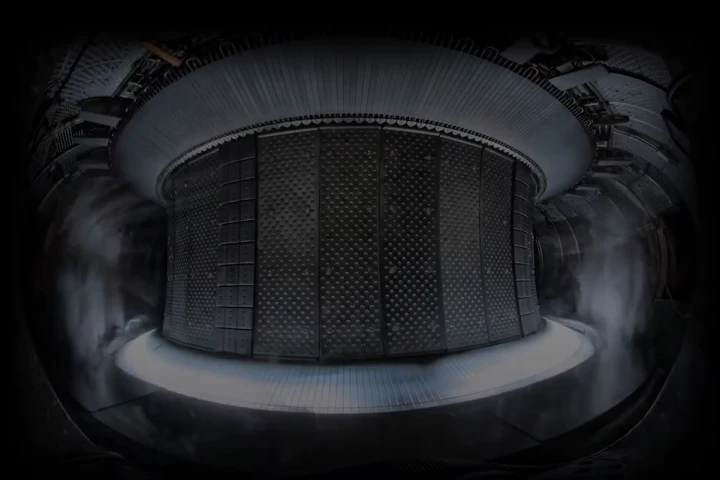About every 10 minutes, it seems, a new article about a "revolutionary breakthrough" in AI hits my screen. A new approach, a new feature, billions of dollars this, AI agents that. It has been non-stop for the last year and grows exponentially every day. Today was no different.
This afternoon, the headline read "Truly autonomous AI is on the horizon." I took pause on that title, as it's something I've certainly heard many times over the years, but this time it read like such a statement of fact that it led me to wonder, "How far is the horizon, exactly? I guess it depends on where you're at."
Personally, when I look out at the sea across the street, it looks to be about four miles (six km) or so before the curvature of the Earth falls away and officially becomes the "horizon." That's not particularly far away. Is "truly" autonomous AI really only that far away?
I'm not so sure, but the University of Technology Sydney's latest AI advancement could possibly change my mind.
Researchers there have developed a new method of training AI on large datasets called Torque Clustering. This new method is inspired by the gravitational interactions that occur when galaxies merge in the vastness of the universe and can (supposedly) efficiently and autonomously analyze massive amounts of data without human guidance or parameters; very much the opposite of how AI currently clusters data.
Somehow, merging galaxies is akin to the process of natural learning, wherein "animals learn by observing, exploring, and interacting with their environment, without explicit instructions," says University of Technology Sydney's Prof. Chin-Teng Lin.
So first of all, what is clustering?
In the simplest analogy, imagine you're at a party. You look around and see separate groups of people huddled together around the room, talking animatedly about their shared interests: Sports, BBQ, gardening, and that one guy standing in the corner alone. That's the most basic idea of clustering.
When a dataset is handed over to AI to learn or analyze, like-data is separated into groups or patterns to be effectively processed. There are quite a few methods of clustering, with K-Means, DBSCAN, and Hierarchical Clustering being the most commonly used. Each method has its strong suits and weak points: complexity of data, cost to process, etc.
More importantly, each method requires some sort of human intervention, be it setting parameters such as the number of predefined clusters, epsilon distances, minimum points per cluster, or hierarchy distance metrics – the list goes on. If any one of those human-set parameters is incorrect, the output will vary greatly to the point of being entirely incorrect.

You've heard of "AI hallucinations," where AI large language models (LLM) output nonsensical or false responses? While clustering issues aren't entirely responsible for these hallucinations, they do contribute to them if similar words or patterns are incorrectly grouped together. Think: that one guy in the corner at the party who joined the sports group when he overheard the words "shovel pass." But realistically, he would have been better off talking to the gardening types as he knows a lot more about trowels than touchdowns. There's a lot more to hallucinations than just that, but that's for another article or ten.
Supervised learning – humans labeling, defining, and setting parameters – is time-consuming, expensive, and becomes very difficult as the complexity of the dataset grows. The concept of Torque Clustering would take human-predefined values and human supervision entirely out of the equation, allowing the AI to make its own predictions and see the relationships within datasets far more efficiently.
So far, researchers have tested the Torque Clustering algorithm on 1,000 diverse datasets with an AMI score of 97.7%. AMI is an "adjusted mutual information" score that measures how well clusters of data are organized. Sports with sports, gardening with gardening, etc, even if both sports and gardening share similar words like "shovel," "turf" and "seed" ... you get the point.
By contrast, other methods of clustering that are considered to be state-of-the-art achieve AMI scores in the 80% range.
"What sets Torque Clustering apart is its foundation in the physical concept of torque, enabling it to identify clusters autonomously and adapt seamlessly to diverse data types, with varying shapes, densities, and noise degrees," says Dr. Jie Yang, first author of the study. "It was inspired by the torque balance in gravitational interactions when galaxies merge. It is based on two natural properties of the universe: mass and distance."
It's a lot to process (no pun intended), but does show promise in the development of artificial general intelligence (AGI). Giving a blank-slate AI a load of data to just "figure it out" seems both intriguing as well as risky. Is it truly parameter-free and fully autonomous? Or is it layered with hidden heuristics that guide its learning path?
The entire Torque Clustering project – which has been making headlines in the last few days – is open-source and available on GitHub to anyone willing to tinker with it, so we'll likely find out the answers to all our questions sooner rather than later. But it has been available since May of 2024 and I haven't seen it as a widely adopted methodology for AI training ... so maybe we already have our answer.
Source: University of Technology Sydney




